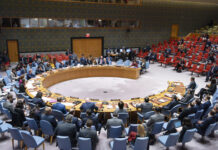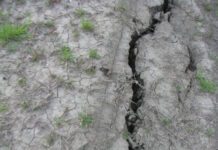Photo credit: DiasporaEngager (www.DiasporaEngager.com).
As we prepare for release of our triennial Impact Report, we reflect on its importance
If Plant With Purpose’s program were a tree, monitoring and evaluation would be the sunlight that guides the direction of its growth. By systematically tracking progress and measuring outcomes, we gain crucial insights. Monitoring allows us to go beyond the number of trees planted and Purpose Groups launched, and to see the impact that these activities have on the lives of participants and the regions where we work. Evaluation illuminates the effectiveness of our strategies, identifies areas for improvement, and optimizes our impact.
Through NGO program monitoring and evaluation, plus learning, Plant With Purpose goes beyond good intentions and serves as a data-driven force for change. With a clear understanding of what’s working and what’s not, we can refine our approach, ensuring efficacy of intended efforts, and maximization of entrusted funds.
Every three years, NGO program monitoring and evaluation efforts culminate in a thorough impact evaluation to assess the results of each program in depth.
The Plant With Purpose model has a three pillar approach—environmental restoration, economic empowerment, and spiritual renewal—so we develop evaluation techniques around all three. These can include questions like Are you in a savings group? Have you planted trees in the past year? Have you helped your neighbor in the past couple months?
It isn’t rare for results to differ from expectations. Thankfully, they quite often outperform expectations. In order to make sure these results are attributable to our program activity, and not just coincidental, we use a counterfactual. This means, we compare a program watershed with one where we do not work, typically one where we intend to work in the future as we expand.
There is a lot of insight to be gained through this type of study. In 2017, we conducted our first impact evaluation, two years after opening our program in the Democratic Republic of the Congo (DRC). We were extremely encouraged to see the results. Poverty in the Kakumba watershed had drastically dropped, and we saw this result in families eating more meals, more children in school, and more families saving money. However, when we looked at the comparison watersheds, we also learned that conditions in an otherwise similar area had deteriorated over that amount of time. That means the improvement in Kakumba went against broader trends and demonstrated an ability for communities to resist the forces that worsen poverty.
A few years later, Plant With Purpose DRC began working in that comparison watershed, and Kambekulu is now our second oldest program area in the DRC. The findings from Kakumba underscored the importance of what we were doing there and the urgency of scaling up that program. Not long after the publication of that study, we received expanded support for our work in the DRC, and we were able to begin working in five additional watersheds over the next few years.
Geographic focus is one area that the impact evaluation informs.
“One thing that we’ve learned from impact evaluations is that there’s significant regional variability within a country,” says Corey Chin, Director of Monitoring, Evaluation, and Learning. “It’s not homogeneous across the country. An evaluation in the Dominican Republic showed us that the conditions in the central region were very different from the conditions in the border region. By collecting impact evaluation data in both regions, we realized that the need in the border region was more severe than we realized. That influenced us to allocate the majority of our future resources toward the border region, and that’s where we’ve been expanding since.”
While the impact evaluation often shows us what’s going well and allows us to demonstrate the effectiveness of the support entrusted to us by our donors, it is not a tool that only showcases our strengths. Just as important, NGO program monitoring and evaluation shows us where our work is not as effective and illuminates ways to improve.
We are committed to acting upon the results of our studies. In a previous evaluation, we saw a lack of technique application in one of our programs. Despite promoting regenerative agriculture techniques, we saw a lower number of people applying those techniques. While that was disappointing, it allowed us to have effective conversations with our partners in the area, explore the reasons why, and establish an action plan in order to remedy the situation. Three years later, the same survey was conducted, and we saw a dramatic improvement in technique application including composting, reduced tillage and application of organic manure as fertilizer..
Ultimately, impact evaluation is an act of stewardship.
As an environmental organization, we often talk about the importance of stewardship as it applies to our natural resources. However, stewardship applies just as much to our financial resources, our collaborative relationships, and the trust our partners and supporters have placed on our work.
Because of our program NGO monitoring and evaluation, we are more confident that the stories we hear from participants are also representative of results across our program. We are eager to share our partners’ stories of transformation and can do so with confidence knowing that they aren’t outliers or exceptions but representative of our overall results.
We have a financial responsibility to utilize our resources in the most effective and responsible way that we can, and we also have an ethical responsibility to do the best work that we can. We want to serve the people who are in conditions of poverty to the best of our abilities. Our triennial impact evaluation plays a critical role in ensuring that we’re doing high quality programming. Without measuring impact, we could not say with confidence that we are doing high quality and impactful work.
Robust monitoring, evaluation, and learning systems provide compelling evidence of an organization’s impact. Data-driven reports showcasing positive outcomes can be powerful tools for advocacy, attracting new donors and securing greater funding for future development initiatives.
At Plant With Purpose, we actively cultivate a culture of learning and improvement. By harnessing the power of data, we refine our approaches, maximize our impact, and ultimately, become a stronger force for positive change in the world.
Source of original article: Plant With Purpose (plantwithpurpose.org).
The content of this article does not necessarily reflect the views or opinion of Global Diaspora News (www.GlobalDiasporaNews.com).
To submit your press release: (https://www.GlobalDiasporaNews.com/pr).
To advertise on Global Diaspora News: (www.GlobalDiasporaNews.com/ads).
Sign up to Global Diaspora News newsletter (https://www.GlobalDiasporaNews.com/newsletter/) to start receiving updates and opportunities directly in your email inbox for free.































